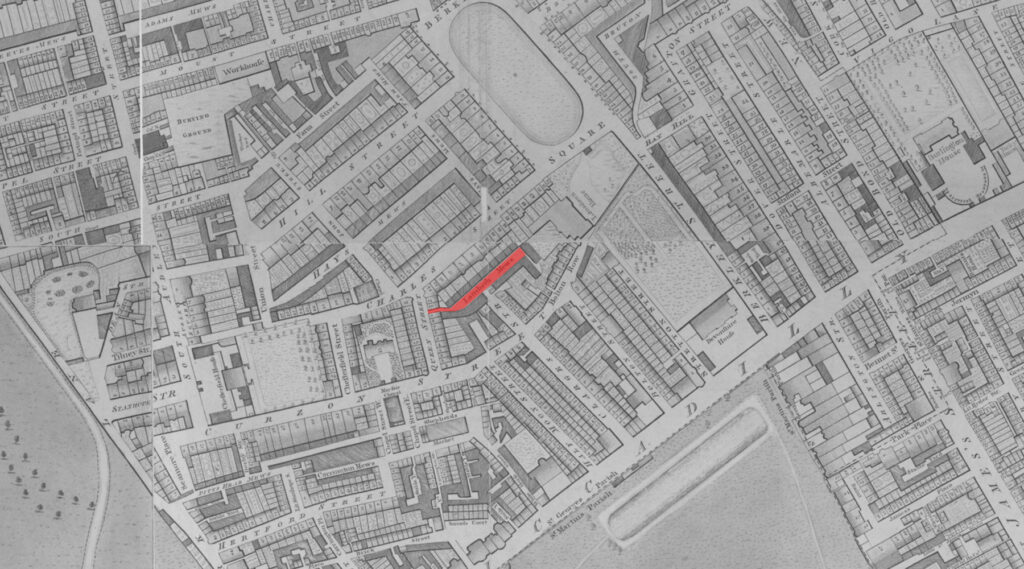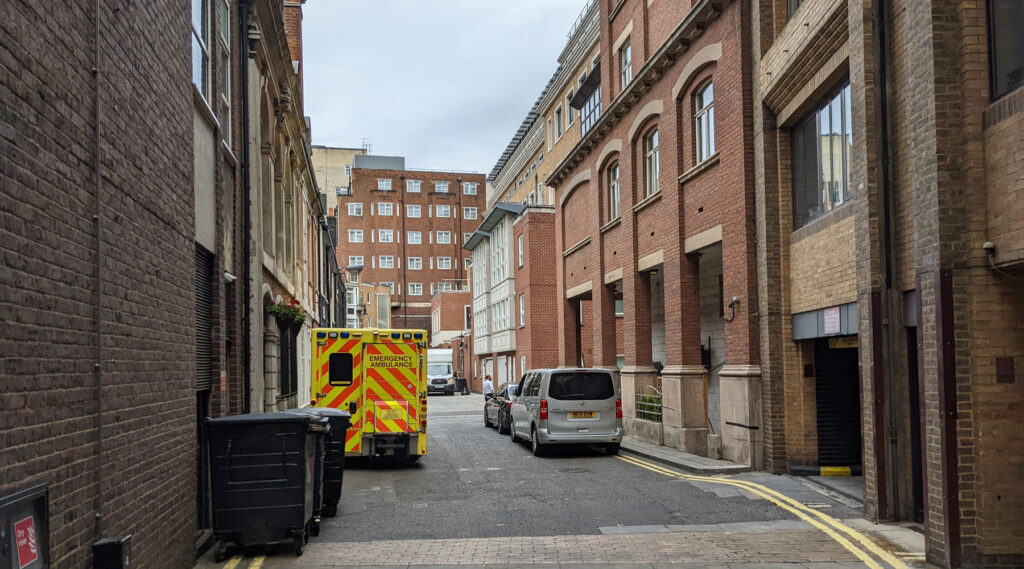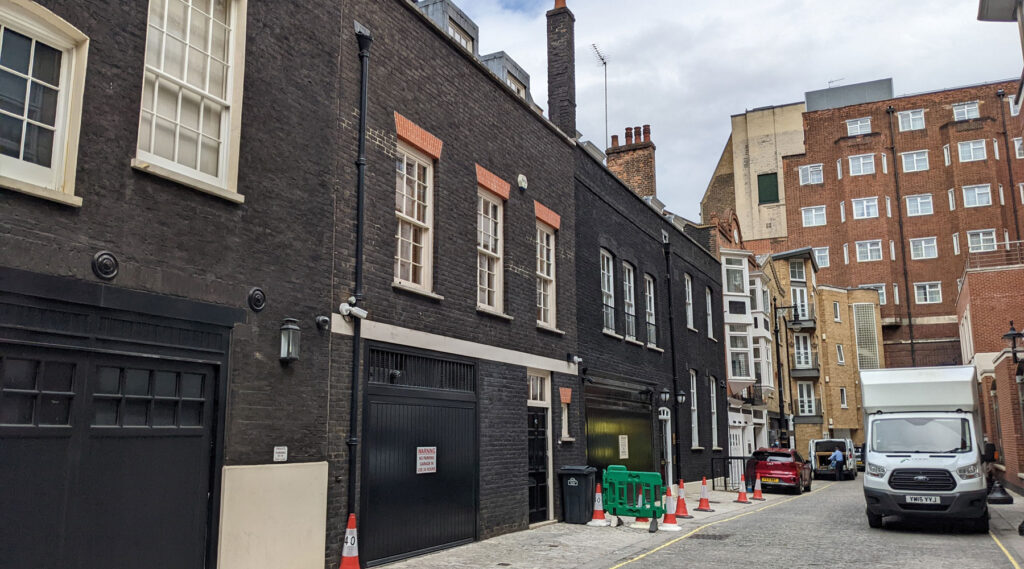Clarges Mews is a curiously mixed mews just to the north of Piccadilly that ranges from charmingly narrow and cobbled to wide open and yard-like spaces.
The area of the mews was originally a farm, Brick Close, on the banks of the Tybourne, and acquired by the first Lord Berkeley of Stratton, and owned thereafter by his descendants. Originally the site of Berkeley House in the 1660s, and although the roads had been laid out early, the development of the area only really took off in the 1770s. By the time of Horwood’s map of 1799, the area is fully developed, and the mews, at the time called Lambeth Mews is clearly shown.
The mews was, as was usual for the time, a row for housing the horses and carriages for the grander houses on the other side, and for housing for stables staff. The advent of the motor car pretty much killed off that need, and mews often became posh housing instead, mostly after WWII. It seems that Lambeth Mews became Clarges Mews about the same time, possibly after Sir Thomas Clarges, an English politician who was a key player in the restoration of the Monarchy in 1660.
The north side of the mews still retains a lot of its original appearance with rows of former stables that have been converted into flats. What looks like a 1970s block of flats sitting above the mews turns out to be the Chesterfield Hotel. A grand facade is the rear of Dartmouth House, the headquarters of the English-Speaking Union charity, and also for hire as an events venue.
Down the far end where the mews looks a lot more mews-like, there are some impressive looking street lamps, as well as a security guard keeping a close eye on me and looking as if he would not appreciate my taking too many more photos. Oddly, on my visit at least, there were two ambulances outside two separate properties at the same time.
The large modern block on the southeastern corner, Curzon Street House, is from the late 1990s, and apart from offices facing outwards, has a row of flats facing into the mews. That modern building replaced an older cluster of buildings, most notable was 1-4 Curzon Street House, an admin office used by MI5 for 20 years, with early computer rooms.
Opposite it is a hotel, The Washington, which despite its modern appearance from the mews, is actually a 1913 Art-Deco inspired building inside.
The mews became newsworthy in 2009, when a group of artists who had been squatting in a mews house were evicted. The fact that the house was being squatted in was revealed when the owners spotted a Christmas tree lit up in the building.
Further down one end, the mews gains a lot more character, as it narrows and passes through a covered passage onto Queen Street.












Hmmm a bit of gooling shows street view images from ’22 and ’21 where are are also 2 ambulances in the same mews! They don’t have the NHS ogo or a trust name so I wonder if they are privately owned and garaged there for some venture.
Round the corner is the Lansdowne Club, a building with its own odd history…